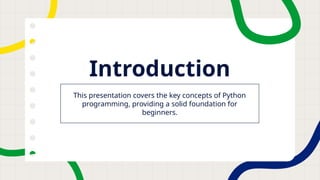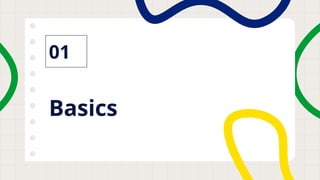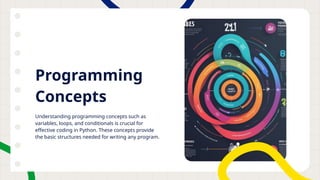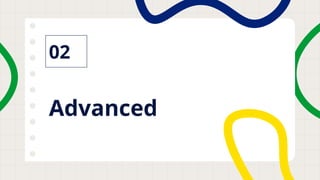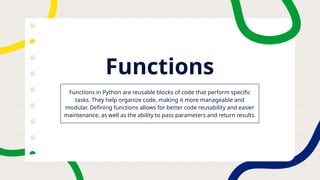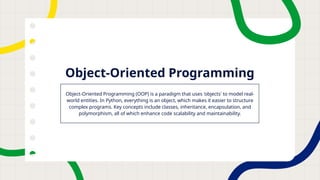Introduction to Python basic concept of python programming.pptx
- 1. Introduction to Python : BY Mrs Kousar Nadaf & Dept AI DS , , Sharad Institute of Technology College of Engg Yadrav Ichalkarnji
- 2. Introduction This presentation covers the key concepts of Python programming, providing a solid foundation for beginners.
- 3. Basics 01
- 4. Programming Concepts Understanding programming concepts such as variables, loops, and conditionals is crucial for effective coding in Python. These concepts provide the basic structures needed for writing any program.
- 5. Data Types Python supports various data types including strings, integers, floats, and booleans. Each data type serves a unique purpose when handling data and performing operations.
- 6. Control Structures Control structures in Python, such as if-else statements and loops, allow programmers to direct the flow of the program. By using these structures, you can execute different code based on conditions and repeat actions, which is essential for building interactive applications.
- 7. Advanced 02
- 8. Functions Functions in Python are reusable blocks of code that perform specific tasks. They help organize code, making it more manageable and modular. Defining functions allows for better code reusability and easier maintenance, as well as the ability to pass parameters and return results.
- 9. Modules Modules in Python are files containing Python definitions and statements, which allow for code organization and reuse. Importing modules enables programmers to leverage pre-written code libraries, thus speeding up development and allowing for complex functionalities without starting from scratch.
- 10. Object-Oriented Programming Object-Oriented Programming (OOP) is a paradigm that uses 'objects' to model real- world entities. In Python, everything is an object, which makes it easier to structure complex programs. Key concepts include classes, inheritance, encapsulation, and polymorphism, all of which enhance code scalability and maintainability.
- 11. Conclusions In summary, understanding both basic and advanced concepts in Python, such as control structures, functions, modules, and OOP, is vital for developing efficient software. Mastery of these areas allows developers to write cleaner, reusable, and more scalable code.
- 12. CREDITS: This presentation template was created by Slidesgo, and includes icons by Flaticon, and infographics & images by Freepik Do you have any questions? Thank you!

